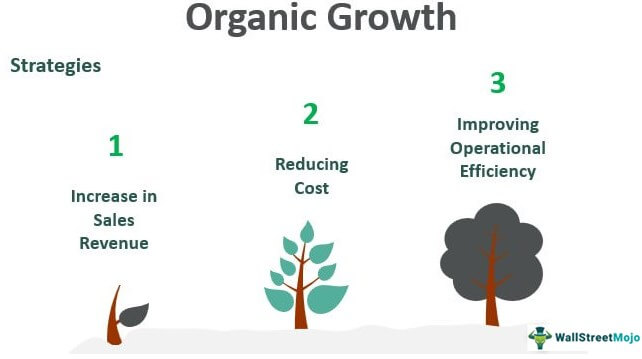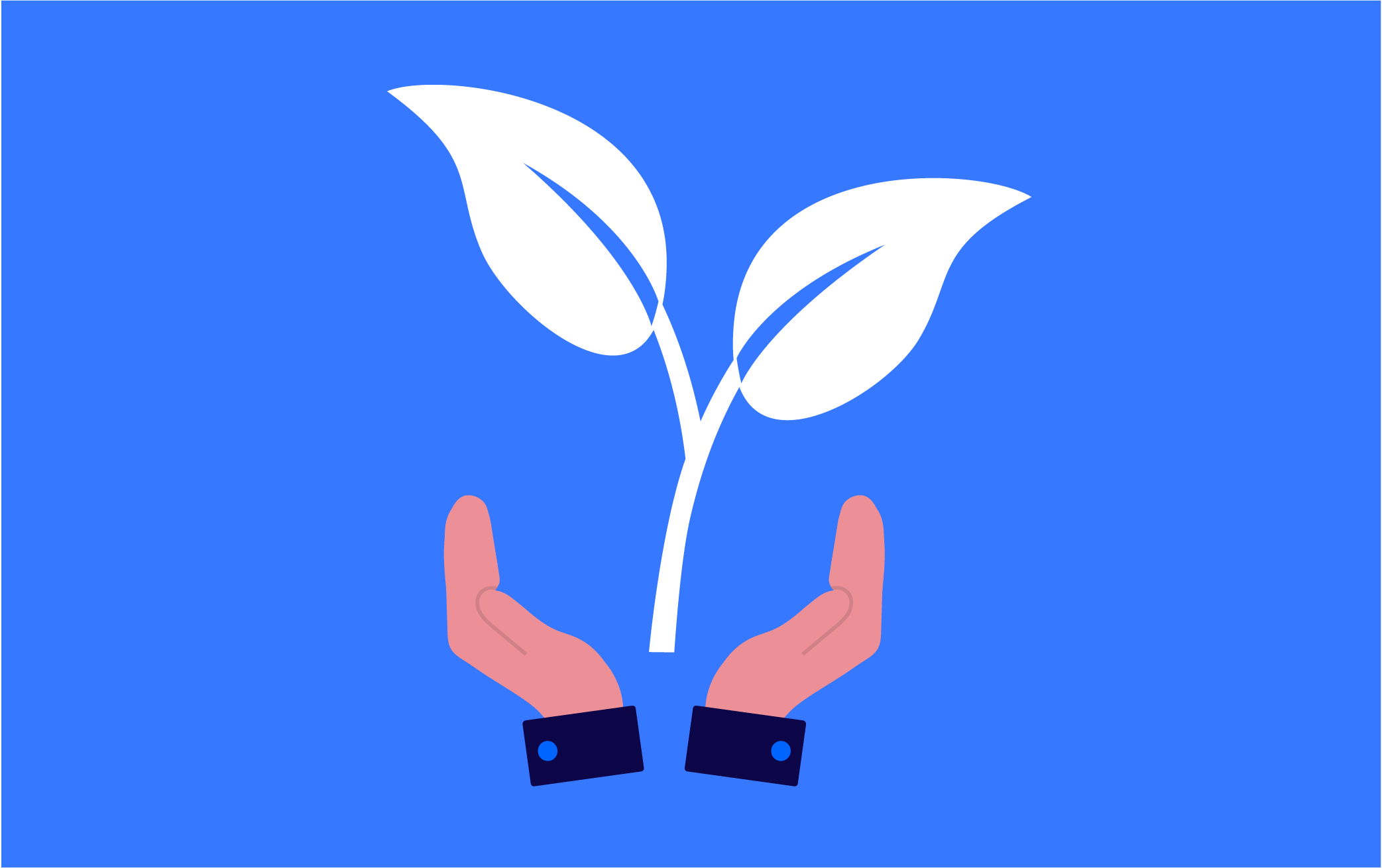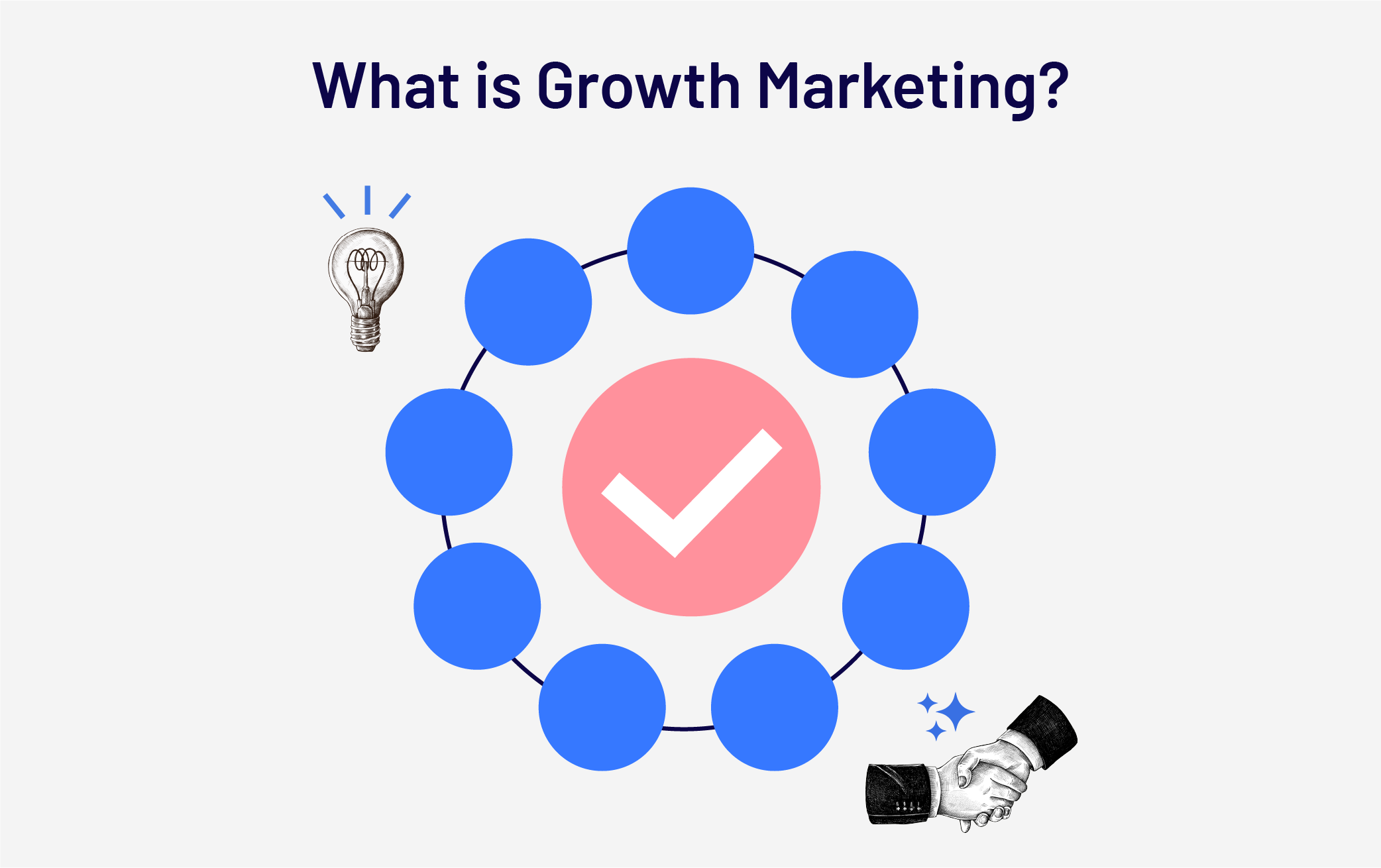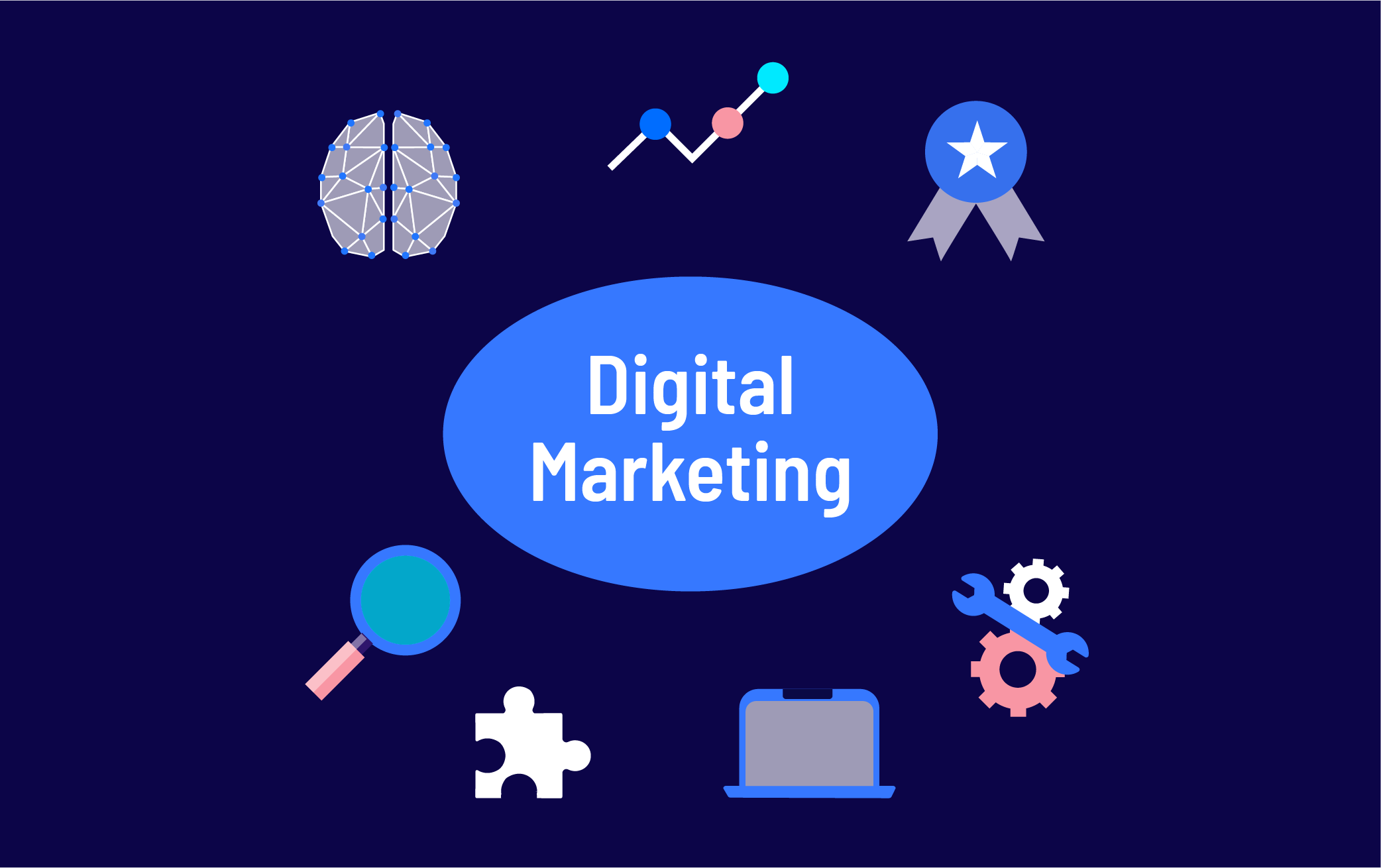The Ultimate guide to boost organic growth in 2024

Imagine organic growth as the business equivalent of sculpting muscles through consistent exercise – it's all about bolstering sales, expanding output, and achieving these milestones from within the organisation's own arsenal.
Organic growth enables businesses to maintain a firm grip on their destiny, steering their course toward success without relinquishing ownership or authority.
Granted, it may take a bit longer to reap the rewards compared to the quick-fix allure of mergers, but as the saying goes, Rome wasn't built in a day.
Organic growth boasts a higher return on investment in the long run, proving that patience truly pays off.
In this article, we'll take a look at how to boost your organic growth.
- What is organic growth?
- Organic vs inorganic growth
- Canva's organic growth
- Proven strategies to boost organic growth
Let's start by exploring what organic growth is. 👇
What is Organic Growth?
Picture it as the business equivalent of building muscle through regular exercise – it's about increasing sales, expanding output, and doing so from within the organisation's own arsenal.
No fancy corporate takeovers here; just good old-fashioned hustle and innovation.
When a company focuses on optimisation, reallocates its resources wisely, and introduces new products or services, that's organic growth in action. It's like fine-tuning a well-oiled machine, ensuring every cog works seamlessly to drive the business forward.
But why opt for organic growth over the glitz and glamour of acquisitions? Simple – it's about control.
Organic growth allows businesses to maintain a firm grip on their destiny, steering their ship toward success without diluting ownership or authority.
Sure, it might take a tad longer to see the fruits of your labour compared to the quick-fix allure of mergers, but hey, Rome wasn't built in a day, right?
Plus, organic growth boasts a higher return on investment in the long run, proving that good things do indeed come to those who wait.
When it comes to boosting organic performance, it's all about rolling up your sleeves and getting down to business. Start by fine-tuning your marketing content – think high-converting, irresistible stuff that grabs attention and keeps customers coming back for more.
Next up, ramp up those sales efforts. Whether it's through innovative promotions, stellar customer service, or simply going the extra mile to delight your audience, every sale counts toward your organic growth journey.
And let's not forget about customer retention – the unsung hero.
By nurturing existing relationships and turning satisfied customers into loyal brand advocates, you're laying the groundwork that's built to last.
(Image source: WallStreetMojo)
Organic vs Inorganic Growth
Organic growth is like nurturing a plant from seed to sprout. It's slow, steady, and requires patience, but the results are oh-so-rewarding. On the flip side, inorganic growth is more like a turbo boost – it gets you where you want to go faster but with a few more bumps along the way.
So, what's the deal with organic growth?
Well, it's all about leveraging what you've got internally – your existing resources, your loyal customer base, and your sheer determination to succeed. It's like building a fortress from the ground up, brick by brick, ensuring that every foundation is rock-solid and built to last.
On the other hand, inorganic growth relies on external factors – think company mergers, acquisitions, and all that jazz. Sure, it might give your company a quick shot in the arm, but it also comes with its fair share of headaches.
Integrating new systems into your company, managing complex branding challenges, and navigating potential pitfalls can make the whole process feel like a rollercoaster ride.
Which is better?
Well, it all depends on your company goals and risk appetite. Inorganic growth might offer a short-term adrenaline rush, but organic growth is the tortoise to its hare – slow and steady wins the race, my friend.
See, organic growth isn't just about making a quick buck – it's about building a sustainable business that can weather any storm.
It shows investors and stakeholders that you've got what it takes to succeed, no matter the economic climate. Plus, there's no denying the allure of being debt-free and in full control of your destiny.
(Image source: UniversalCPAReview)
Canva's example of an effective organic growth strategy
Founded by Melanie Perkins in Australia, Canva defied expectations by achieving explosive growth without the usual fanfare of ads and aggressive marketing tactics.
So, what's their secret sauce? It all boils down to three core pillars:
1️⃣ - Canva is a tech-savvy marvel designed with the user in mind. They tapped into the growing demand for DIY design solutions, offering a platform that's as easy as pie to navigate.
2️⃣ - Canva's user-centric approach ensures that everyone – from seasoned designers to newbies – can create stunning visuals without breaking a sweat. Their mantra? Keep it simple, and keep it user-friendly.
3️⃣ - Simplicity reigns supreme at Canva. Despite boasting a treasure trove of tools and templates, their platform remains remarkably easy to use, ensuring that even the most design-challenged among us can unleash our creativity with ease.
Canva's organic growth strategy is a thing of beauty. Through a carefully crafted SEO framework and a strong presence on social media, they've managed to skyrocket their visibility without spending a dime on traditional marketing.
Their keyword strategy, focusing on terms like "Best Design Tool" and "Free," ensures that Canva pops up whenever someone searches for design-related solutions.
And with a strong foothold on platforms like YouTube and Pinterest, they've turned their loyal users into brand ambassadors, spreading the Canva gospel far and wide.
But it's not just about awareness – Canva knows how to keep users hooked from start to finish. With mobile accessibility, generous free plans, and a tiered pricing model that caters to every budget, they've got all bases covered.
And let's not forget about education – Canva's commitment to empowering users through resources like Design School and blogs sets them apart from the competition.
By removing barriers to adoption and ensuring that users understand the full potential of their product, Canva has created a loyal community of advocates who can't stop singing its praises.
In a nutshell, Canva's journey is a testament to the power of organic growth, user-focused design, and community-driven marketing.
It's a reminder that in a world of flashy ads and empty promises, sometimes all it takes is a great product and a passionate community to change the game.
So here's to Canva – less is indeed more.
5 Proven Strategies to boost organic growth
1. Invest in a long-term content creation strategy.
There are no shortcuts when it comes to organic growth. Whether you're a startup or a seasoned player, success boils down to playing the long game.
It's about understanding that sustainable growth and profit take time to cultivate.
👉 Only 40% of marketers actually have a documented content marketing strategy. Crazy, right?
But here's where the opportunity lies – you have the chance to step up your game and craft a content strategy that sets you apart from the competition.
And trust us, the benefits are worth it:
1. Cost Efficiency: Research shows that your cost-per-lead can drop by a staggering 80% within just five months of implementing a content marketing strategy. 3
2. Lead Generation Magic: Businesses that blog witness a jaw-dropping 126% increase in monthly leads compared to their non-blogging counterparts. Need we say more?
3. Online Visibility Boost: Websites with an active blog have a whopping 434% more indexed pages, 97% more inbound links, and 55% more visitors than those without one. Now, that's what we call visibility!
You can't expect to compete with the big dogs by churning out a couple of blog posts here and there.
Nope, to truly optimise for growth, you need to think big picture.
That's where a long-term content marketing strategy comes into play. Instead of chasing quick wins, focus on creating evergreen content that continues to serve your business for years to come.
Repurpose, reuse, and reimagine your content to maximise its value and impact.
Remember – content isn't just something you use once and toss aside. It's an asset that keeps on giving, providing lasting value and driving organic growth for your business.
So, the next time you're tempted to take the shortcut, remember this – in the game of organic growth, slow and steady wins the race.
2. Jump on emerging trends.
Once you've got your goals and audience locked in, it's time to shift your focus to what's hot and happening in the world of your audience.
And trust us, staying on top of trends isn't just a nice-to-have – it's a must-have if you want to keep your finger on the pulse of your industry.
So, how do you do it?
Here are a few tips to get you started:
1. Tap Into Tools: Tools like Google Trends, BuzzSumo, and SEMrush are your best friends when it comes to uncovering what topics, keywords, and formats are trending in your niche.
2. Follow the Leaders: Keep a close eye on industry influencers, blogs, podcasts, and newsletters. These thought leaders are at the forefront of the latest trends and insights, so soak up their wisdom like a sponge.
Don't just copy what they're doing.
3. Stay Educated: Take part in online courses, webinars, and workshops to further your knowledge and skill set.
4. Join Online Communities: Whether it's group chats, Twitter trends, or LinkedIn groups, these platforms offer great insights and motivation.
5. Keep Up with Algorithms: Search engines and social media platforms are constantly tweaking their algorithms to deliver better results. If you want to stay ahead of the game, you need to keep up with these changes.
👉 Platforms like the Moz blog and Search Engine Journal are your go-to sources for your organic business growth.
3. Create content around a specific niche
When it comes to choosing a niche, passion and knowledge are key.
You want to pick a niche that you're genuinely interested in and can provide valuable insights on. This not only ensures that your content is authentic and engaging but also makes the content development process more enjoyable for you.
Plus, your passion and expertise will shine through, building trust and credibility with your audience.
You also need to consider your audience and the demand for your niche. You want to choose a niche with a clear and specific target audience that you can reach and serve with your content.
By understanding your audience's pain points, goals, and content consumption habits, you can tailor your content to meet their needs effectively.
(image source: Shopify)
4. Develop strong, easy-to-understand differentiators
If your company is already highly specialised or positioned in a well-defined niche, consider yourself lucky – you've got a built-in differentiator right there.
But for the rest of us, it's time to roll up our sleeves and get to work.
So, what exactly is a differentiator?
Simply put, it's a feature or benefit that sets you apart from the competition. Think of it as your unique selling proposition – the thing that makes you stand out in a sea of sameness.
Research done by HingeMarketing revealed that differentiation was a top marketing priority of high-growth firms to boost their market share.
1. Truth: First and foremost, your differentiator needs to be true. There's no room for smoke and mirrors here – if you're making a claim, you need to be able to back it up with hard evidence.
2. Relevancy: Is your differentiator relevant to your prospect? In other words, does it address their needs and concerns? If not, it's time to go back to the drawing board and come up with something that hits the mark.
3. Provability: Last but not least, your differentiator needs to be provable. Can you demonstrate with concrete evidence how your unique services or expertise can benefit the client? If so, you're on the right track.
5. Build a strong community of brand ambassadors
Let's wrap up this journey with a crucial aspect of organic growth – building a strong community of brand ambassadors.
Now, what exactly are brand ambassadors? These are the folks you hand-pick to represent your brand.
Often, they're already die-hard fans who sing your praises from the rooftops – or in today's world, on their social media platforms.
In return for their advocacy, you might offer them perks like regular paychecks or free products/services.
So, why bother with a brand ambassador programme? Well, let me break it down for you:
1. Boost Your Online Presence: Brand ambassadors help amplify your brand's voice across social media platforms, increasing your online visibility and reach.
2. Create Original Content: These ambassadors aren't just shouting into the void – they're creating original content that you can repurpose and share on your own social media channels, further enhancing your brand's presence.
3. Forge Stronger Community Bonds: By nurturing relationships with your brand ambassadors, you're not just building a fan club – you're cultivating a tight-knit community that rallies around your brand and spreads the love far and wide.
A world where your customers, partners, employees, and investors play a central role in decision-making. That's the power of Community-Led Growth.
The beauty of Community-Led Growth lies in its democratic, participatory nature. It's not just about driving sales – it's about fostering meaningful connections and creating a tribe of loyal brand advocates.
(Image source: Atrivity)
Conclusion
Organic growth emerges as the cornerstone for sustainable success. It embodies the ethos of nurturing existing resources, cultivating innovation, and fostering lasting relationships within the organization's ecosystem.
Though it demands patience and perseverance, its long-term returns outweigh the allure of rapid expansion.
Canva's remarkable journey exemplifies the potency of organic growth strategies, emphasizing user-centric design, community engagement, and strategic visibility.
By harnessing SEO frameworks and social media platforms, Canva crafted a flourishing ecosystem without hefty marketing expenditures.
Embracing organic growth entails investing in content creation, adapting to emerging trends, and carving out niche expertise. It's about nurturing a loyal community of brand ambassadors who champion the brand's values and amplify its reach organically.
In essence, organic growth isn't just a pathway to profitability; it's a testament to resilience and foresight.
It's about building a business fortress brick by brick, ensuring sustainability, and weathering any storm that comes its way.
FAQ
1. What distinguishes organic growth from inorganic growth strategies?
Organic growth emphasises utilising internal resources and gradual expansion, whereas inorganic growth relies on external factors like mergers and acquisitions for rapid expansion. While organic growth prioritises control and sustainability, inorganic growth may offer short-term boosts with potential complexities.
2. How long does it typically take to see results from organic growth efforts?
Organic growth is a gradual process that varies depending on various factors such as industry, market conditions, and the effectiveness of implemented strategies. While some results may be noticeable in the short term, significant growth often manifests over months or even years of consistent effort.
3. What are some common challenges businesses face when pursuing organic growth?
Challenges in organic growth can range from resource constraints and market saturation to maintaining innovation and adapting to evolving consumer preferences. Additionally, businesses may encounter difficulties in accurately measuring the impact of organic growth initiatives and effectively differentiating themselves from competitors.
4. How can businesses ensure sustainability while pursuing organic growth?
Sustainable organic growth necessitates a holistic approach that prioritises long-term viability over short-term gains. This includes investing in innovation, fostering customer loyalty, maintaining financial prudence, and nurturing a resilient organizational culture. By aligning growth initiatives with core values and market needs, businesses can sustain momentum and mitigate risks.
5. What role does data analytics play in optimising organic growth strategies?
Data analytics serves as a crucial tool for identifying growth opportunities, understanding consumer behaviour, and measuring the effectiveness of organic growth initiatives. By leveraging data insights, businesses can refine their marketing efforts, personalize customer experiences, and iterate on product/service offerings to maximise organic growth potential.
Categories
- Business & Innovation (72)
- Growth & Marketing (58)
- Data & Analytics (27)
- UX Design (13)
- Alumni Stories (11)
Related articles
Latest articles
Boost your Revenue Growth using LinkedIn Social Selling
In a digital age where connections mean everything, leveraging...
The Power of Collaboration: Enhancing Team Performance Tactics
As organisations navigate complex challenges and strive for...
The Ultimate guide to boost organic growth in 2024
Imagine organic growth as the business equivalent of sculpting...
The best 2024 Business Development Guide
What exactly is business development, and how does it differ from...




















